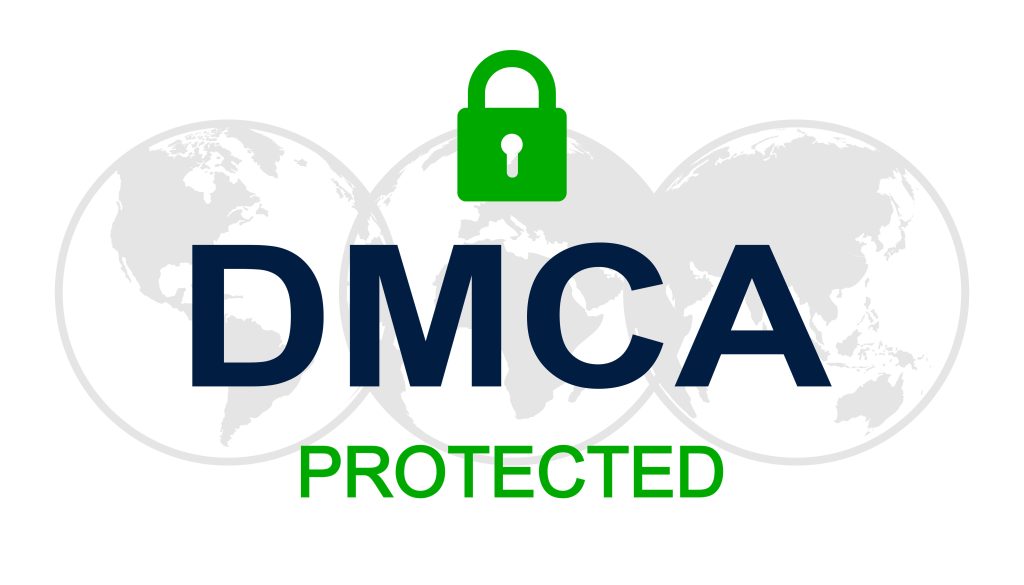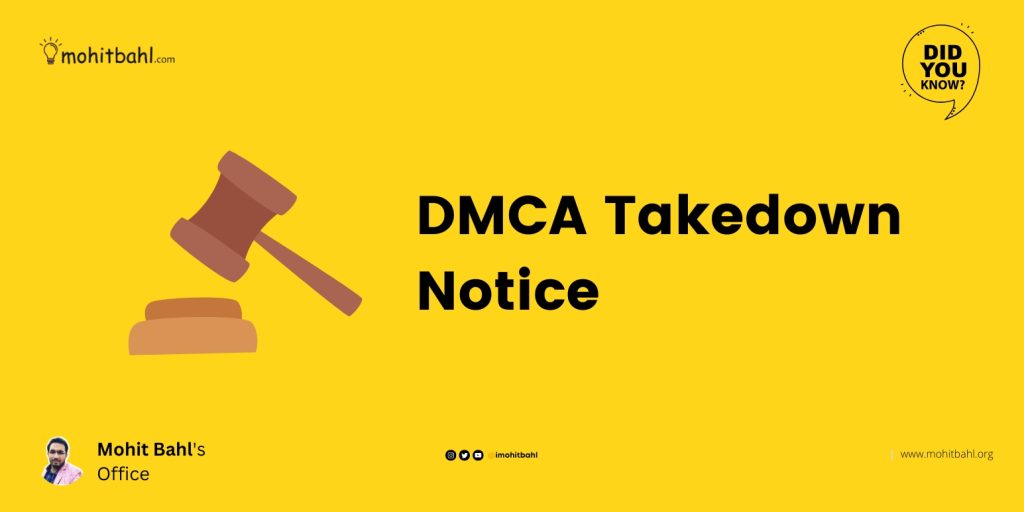DMCA is an Act of United States Copyright Law. The full name of this act is the Digital Millennium Copyright Act. As it is a part of the United States Copyright Law and pertains to an outlined procedure for removing information from the internet.
The term DMCA Takedown is most commonly used to refer to the method associated with the DMCA.
Why do you think the DMCA is important?
As part of U.S. copyright law, the DMCA talks about the rights and responsibilities of people who own copyrighted material and think their rights have been violated, especially but not only on the Internet.
The DMCA also talks about the rights and responsibilities of OSP/ISP (Internet Service Providers), whose servers or networks may have infringing content.
This law sets up a framework, called the DMCA Takedown (Section 512(c)(3)), for a process between two parties to ask for and remove copied content found online.
The DMCA Takedown method has been used by the greater part of websites, ISPs, OSPs, and hosting firms to deal with requests to remove lawfully stored content from websites under their control. If you believe that the DMCA takedown process will allow you to get your content deleted, you may do so.
How to remove my stolen content from a website with DMCA?


To get started with the process of filing a DMCA Takedown Notice, you will need three main pieces of information:
1. Infringing URL
What is the page URL that contains the content you want to be removed? Be careful to provide the uniform resource address (URL) of the website or webpage that contains the content you want to have deleted. If you have stolen content, please provide the URL or platform where it may be found.
If the content that was stolen was an image or video found on a website, please include the direct URL to the content found on the website. If needed, please copy and paste the infringing text, or provide the URL of the picture that is illegal.
2. Source URL
When it was stolen, where was your content? Was it on your profile on social media? Was it a link from your website? Even if the information has been deleted from its original place, provide the precise URL where it was taken from. The notification can still benefit from the original URL.
You can refer to your phone, computer, camera, etc. if it wasn’t online. Give the URL to the specific page it was taken from if it was online, such as on a website or in cloud storage. You can upload the original information to a cloud storage platform and share the URL along with a description of the source.
3. Ownership Description
What was the content owner’s name, and how was the content taken? How does this material identify you? Why do you possess it? Do you own the rights to it? Did you create it?
Who is claiming to be the content’s owner? Who has the right to submit a DMCA takedown? When was the content taken, and when did you produce it?
An example of a description would be, A photo of me that someone stole from my Google Drive and put on this website without my permission. I want it taken down.
If you are confused about collecting the information for these three categories, the Professional Takedown Team can provide you with the answers to your questions.
Tip: Be Prepared. The information needed for DMCA is the same information needed for nearly all takedown notice requests regardless of legal country and legal jurisdiction.
Do only American citizens have access to DMCA?
Despite the fact that the DMCA is a part of US copyright law. There is wide international adoption of the DMCA Takedown procedure outlined in the statute.
The DMCA Takedown Notice form and procedure are universally recognized. In spite of the fact that the DMCA Takedown is a component of US Copyright law, a DMCA Takedown Notice is widely used and recognized outside of the United States. National copyright laws in several countries govern the removal of content from ISPs and website owners.


The list of which service providers will and will not comply with the standard DMCA takedown notice form and method is ever-evolving.
They may modify the data provided by users through the standard DMCA Takedown registration form to better fit the legal requirements of certain countries and service providers. The experts at DMCA.com are aware of these continuous shifts.
When a website removes my content, do they automatically invoke the DMCA?
No. You can still use a DMCA Takedown Notice to get your stolen content removed, even if the offending website makes no mention of DMCA compliance. There are a variety of valid explanations for why a website might not mention the DMCA clearly.
How can I know if a website uses DMCA?
As a rule, if a website uses the DMCA, a link to the relevant part of the DMCA can be found in the site footer. There should be no confusion about the terms of the DMCA Takedown process after you click through.
The DMCA.com Takedown Notice form is frequently linked to other sites. Here’s where you may submit a website removal request if you’re confused or the site is confusing: Notice of Removing Content Due to the DMCA. A member of our expert staff will route your takedown request to the appropriate service.
What steps must I take to add the DMCA to my website?
Adding a DMCA notice to your website is a proactive step to inform users that you respect copyright laws and are committed to addressing potential copyright infringement issues.
While I can provide you with a general guideline, it’s important to note that I am not a legal expert, and you should consult with legal counsel to ensure compliance with the law in your jurisdiction. That being said, here’s a general outline of steps you can consider:
- Create a DMCA Policy Page on your website to host your DMCA policy. This page should be easily accessible from your website’s footer or menu same like Terms and Conditions Page and Privacy Policy Page.
- The next step is to Draft the DMCA Policy.
- Provide clear contact information for your designated DMCA agent or representative who will handle DMCA-related matters. This could be an individual or a legal department.
- Ensure that the DMCA policy is easy to read, well-organized, and uses clear language. You can use headings and bullet points to break down the information for clarity.
- Place a link to your DMCA policy page in your website’s footer or menu so that users can easily find it. If you have user-generated content (e.g., comments, user submissions), consider including a link to the DMCA policy near these areas to encourage compliance from users.
- Establish an internal process for handling DMCA notices that includes reviewing the notices for validity, promptly removing infringing content, and communicating with the copyright owner and the user responsible for the content.
- Copyright laws and online practices can change over time. Periodically review and update your DMCA policy to ensure it remains accurate and compliant with current regulations.
Remember that a DMCA policy is a legal document, and its accuracy and effectiveness are crucial. Consulting with legal experts ensures that your policy is comprehensive, compliant, and provides proper protection for both your website and copyright holders.
The Future of the DMCA
As technology continues to evolve, the DMCA’s relevance remains a subject of ongoing debate. New challenges, such as the proliferation of user-generated content and the complexities of content identification, require continuous adaptation of copyright law to ensure fairness for all parties involved.
In conclusion, the Digital Millennium Copyright Act serves as a critical framework for navigating the complex terrain of digital copyright infringement. It strives to protect the interests of copyright holders while fostering an environment that encourages the exchange of ideas and information.
However, finding the right balance between copyright protection, freedom of expression, and technological advancement remains an ongoing challenge as the digital landscape continues to evolve.



